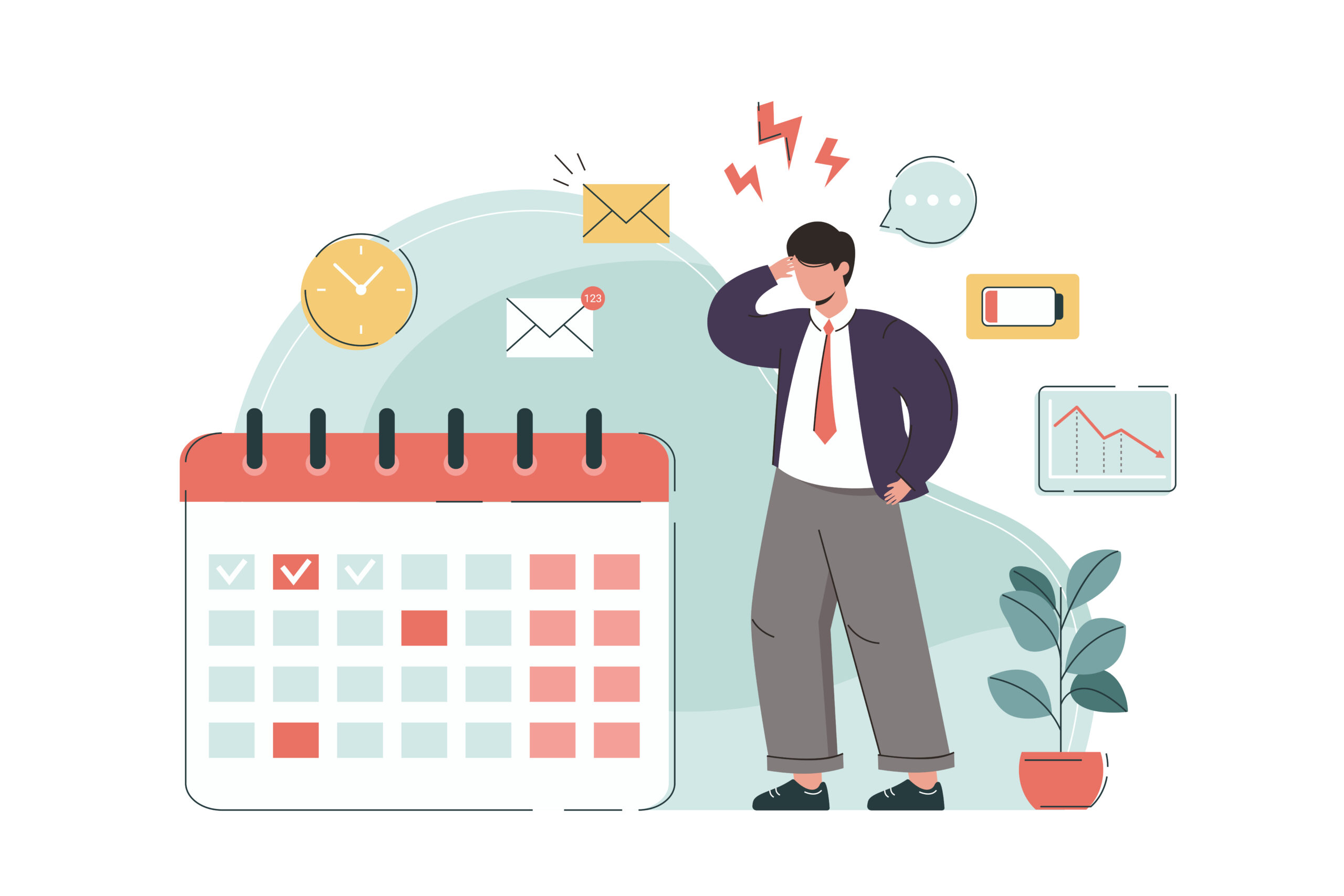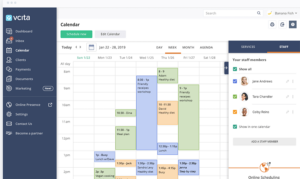Being an instructional coach can be hectic. Besides the coaching work, you need to attend faculty meetings and complete the required paperwork. Even other types of coaches have similar, nonspecified, duties to take care of. As you already know, time management is an important aspect of working as a coach.
You need to make sure that every aspect of your work fits into your coaching schedule. Most instructional coaches need something more advanced than a simple schedule. They need an optimized coaching schedule for the different aspects of their work. It needs to be flexible and available at any time.
An up-to-date schedule will help you as an instructional coach to manage your time most effectively. The easy part of your scheduling process is the meetings and classroom visits. But there are many more factors for you to take into account in your coaching schedule.
Why Is a Coaching Schedule Important?
A good coaching schedule is important for instructional leaders and team members. It is the basis for the coaching plan and ensures optimal use of your time. That is important if you want to continue to grow across the organization. It’s more effective than periodic training or emergency coaching.
- A coaching schedule helps supervisors to focus their coaching efforts on the most important skills. It makes sure that they keep a balance between coaching and the opportunities for growth of different team members.
- Milestones and target dates are only two of the supervisor's tools to track growth. The real measure is much more personal; it is the actual growth and development of an employee.
- Another advantage of a coaching schedule is the better relationships with individual coaches. It gives them confidence when they approach you with questions or feedback on projects and other challenges.
These schedules also help individual coaches to meet their personal goals. A coaching schedule will encourage you to be a motivating force within the team. It creates an enthusiastic and pleasant work environment for everyone. Let’s see how you can create one!
How to Create an Effective Coaching Schedule Step-By-Step
You have seen the benefits of having an organized coaching schedule. How, then, do you make an effective coaching program? Here are the main steps.
Determine the goals
A goal does not only define the endpoint. One of the most important aspects is that it defines the parameters of success and the expectations. It tells you what you want to accomplish and how you want to achieve it. It may include personal responsibilities and work duties, as defined in job descriptions.
The goals are sometimes defined for a team or an organization, but it is important that individuals do this as well. That helps them to set and achieve long-term goals. It makes clear what the motivations are and why the goal is important. That makes skill evaluation easier and more insightful.
Write it down
This step sounds obvious but people often forget it. It is the first actionable step in creating a coaching schedule. What should you do? Make a list every week of all the meetings and other appointments for the following week.
You can think of making this schedule like a jigsaw puzzle. You look for the edge pieces first because they are easy to recognize and they define the workspace. Making a schedule with the weekly tasks defines the work parameters of each instructional coach.
A popular method is the "Getting Things Done" approach. Millions use it to free up their mind's resources by writing down upcoming tasks and important ideas.
If you use this approach, you will not forget a task or idea. You can make a note as soon as you think of them. When it is recorded, you can determine what priority it takes. With that information, you can assign it to the right place in your coaching calendar.
Develop your training materials
After designing your instructional material you can continue to develop it.
You may have used different tools in creating the instructional coaching material. These are some of the tools that many use in their teaching:
- Spreadsheet and text processors, for example as part of Microsoft Office. Many use it to prepare handouts for students or notes and session outlines for coaches.
- Hands-on materials for training and role-playing.
- PowerPoint presentation templates as material during instructional sessions. Do not make slide after slide with only bullet points.
- Graphics in the form of posters, flip charts, and so on. They serve as visual guides for the instructional coach and employees.
- E-learning software. These include ProProfs Training Maker, Adobe Captivate, and Articulate Studio. These are aids in preparing e-learning modules.
Streamline your coaching schedule with a booking app
The calendar and booking app will help you immensely to create, manage, and stick to your coaching schedule. Trafft is a coaching scheduling software that goes beyond the basics and has all of your favorite calendar integrations, including iCal, Outlook, and Google Calendar. It offers a wide range of powerful features designed to streamline scheduling, boost your coaching practice, and enhance the client experience.
You’ll completely eliminate conflicts in your coaching schedule, including no-shows and double bookings. What’s even better is that Trafft allows you to collect online payments for your coaching sessions, sends automated reminders, and you can even take customer notes! You can set up recurring appointments as well and completely organize your coaching schedule.
Once you set up your booking page, your clients will simply have to fill out a booking form, and your whole scheduling process is completely automated! Don’t worry, you can set your availability and once clients book a session, your coaching schedule automatically updates.
You can see Trafft’s coaching scheduling software in action by checking out the coaching demo booking page.
But wait, the best part is yet to come!
Trafft offers a FREE plan for up to 5 users, making it one of the most generous free plans out there. If you want to compare and explore other plans, feel free to do it.
So, what are you waiting for? Sign up for free and experience firsthand why Trafft is the best scheduling software for coaches like you.

Create time blocks for different activities
The block schedule is another excellent way of gaining control over your coaching schedule. It is most useful if you have the tendency to constantly switch between tasks or you are prone to distractions.
This time management strategy prescribes that you set up your schedule in advance and that you block off sections for one activity only. This might at first seem restrictive, but it forces you to focus your attention on one thing and frees your mind to concentrate. After you finish one task, you can move on to the next with a feeling of satisfaction.
This approach increases your focus, makes you a more productive instructional coach, and reduces the time you need to finish a task.
Evaluate skillsets
It is important to consider your instructional coaches' skill sets when you assemble a coaching plan. It is convenient to list the duties and responsibilities of each employee. It will highlight their existing competencies and reveal the skills that require development. Discuss this evaluation with them because it shows that you care about their talents. It also encourages them to work on their skills and abilities to improve their performance.
Correcting shortcomings in your team's performance is not the only purpose of coaching. Employees should not get the impression that they receive coaching only when they are doing something wrong and that it is disciplinary.
Focus on people's strengths during coaching meetings. This promotes good behavior and is a starting point for developing new skills.
So, while you work on reinforcing positive behavior you encourage people to work in an area they enjoy, which makes them enthusiastic. You will find that people are more motivated and enjoy their jobs.
Detect your energy cycles and use them
Be ready to focus on the task of creating a coaching calendar because you will need to tackle different challenges. Commence work on it at a time when you feel energized, for example, in the morning. That will help you get the various tasks done fast.
If you are an instructional coach, you will have to adjust your schedule so that you are ready to tackle tasks whenever necessary.
Think about when you have the most focus and energy. Use these peaks in your energy cycle to handle more complex tasks. You can use these moments, for example, to handle the more difficult group coaching meetings.
Tackle easy jobs during the times you feel less focused. For example, replying to emails usually demands less concentration.
Short-term vs long-term goals
Using the outlined steps, coaches can remove obstacles to effective work practices, which promotes harmony and helps to set goals and milestones. Look for the areas in which your employees can progress. Set short-term and long-term goals that help them to achieve better performances.
Consider the case of an employee who needs to improve public speaking. An end goal could be to present a product demonstration session at a conference. Together you can determine the short-term goals that will lead to the goal. The employee could present at monthly internal meetings and gather feedback from others. Also, you can have one-on-one coaching conversations each week.
Write down this action plan and the associated milestones.
Plan Coaching Sessions

If your program is ready and you have found people to take the lead in the coaching meetings, you can begin scheduling. The coaching program is an addition to the regular coaching calendar. This kind of coaching takes the form of one-on-one sessions.
Each employee has different needs. The coaching program should be available to anyone that wants it. Make sure that it is accessible. Another important thing to note is that scheduling is more flexible when you make use of virtual coaching.
Schedule in white space
The ability to keep a balance between reactive tasks and interacting with clients makes someone a successful coach. It will put people in a position to contribute to a business' growth. One way to achieve this balance is the whitespace approach.
You can add empty blocks to your weekly coaching calendar. You can reserve them for special creative tasks. You know that these long-term-oriented tasks are important. In this way, you ensure that you pay attention to these aspects of your job description too. It’s a great way to avoid being too absorbed in your day-to-day routine.
Evaluate results and adjust
You ask your employees to improve and you should do the same. Keep measuring your performance and adjust wherever necessary.
You evaluate your employees and you will see a difference between the ones who received training and the ones who did not. Likewise, ask for subjective feedback from those who were part of the training program and ask for suggestions. This will help you to refine your approach and skills.
FAQs About the Coaching Schedule
1. What is the typical length of a coaching session?
A coaching session typically lasts between 45 and 60 minutes. Depending on the type of coaching and the preferences of both the client and the coach, the duration may vary. Depending on the needs and goals of the customer, some coaches might also provide shorter or longer sessions.
2. How often should I schedule coaching sessions?
Your client’s goals determine how frequently you’ll have coaching sessions with them. Clients typically meet with their coaches once or twice a week. However, based on their availability and preferred working speed, some customers may choose to meet with their coaches more or less regularly.
3. Is it possible to change the coaching schedule once it's been set?
You can change your coaching schedule once you’ve established it. However, contact the client beforehand to minimize last-minute adjustments that can interfere with their schedule. It’s also important for your client to respect your coaching schedule. One great way to achieve that is to create a cancellation policy.
5. Can coaching sessions be scheduled outside of regular business hours?
To accommodate their clients' schedules, some coaches offer coaching sessions outside of normal office hours. The client's time zone and the coach's availability, though, may have an impact.
Final Words on Making an Effective Coaching Schedule
Remember: the goal of your coaching schedule is to provide the best possible services to your clients, while you still have time for yourself. When your coaching schedule is organized, you’ll have enough time to guide clients in the right direction and help them to achieve their goals faster and more easily.
You need to keep your goals clear in mind when you make the schedule. You need to schedule the time for clients and for yourself. Having white spaces in your schedule does not mean that you need to fill every minute of every day.
It can be a challenge to find the right approach to creating a coaching schedule. Yet, it is worth the effort. Busy coaches need to get the most out of their valuable time.
There are many ways to create or adjust a coaching schedule. We’ve provided you with the guide so you can implement these advancements, and notice the improvement in your time management efficiency.
Hungry for more?
We have just what you need! Dive into additional resources about coaching and gain more knowledge:
- The Best Coaching Questions You Could Ask Your Clients
- Guide to Coaching Business Models with Examples
- Types of Coaching: The Only Guide You’ll Ever Need
- The Best Coaching Apps to Take Your Business to The Next Level
- Coaching Scheduling Software: Top 7 Picks & In-Depth Reviews






